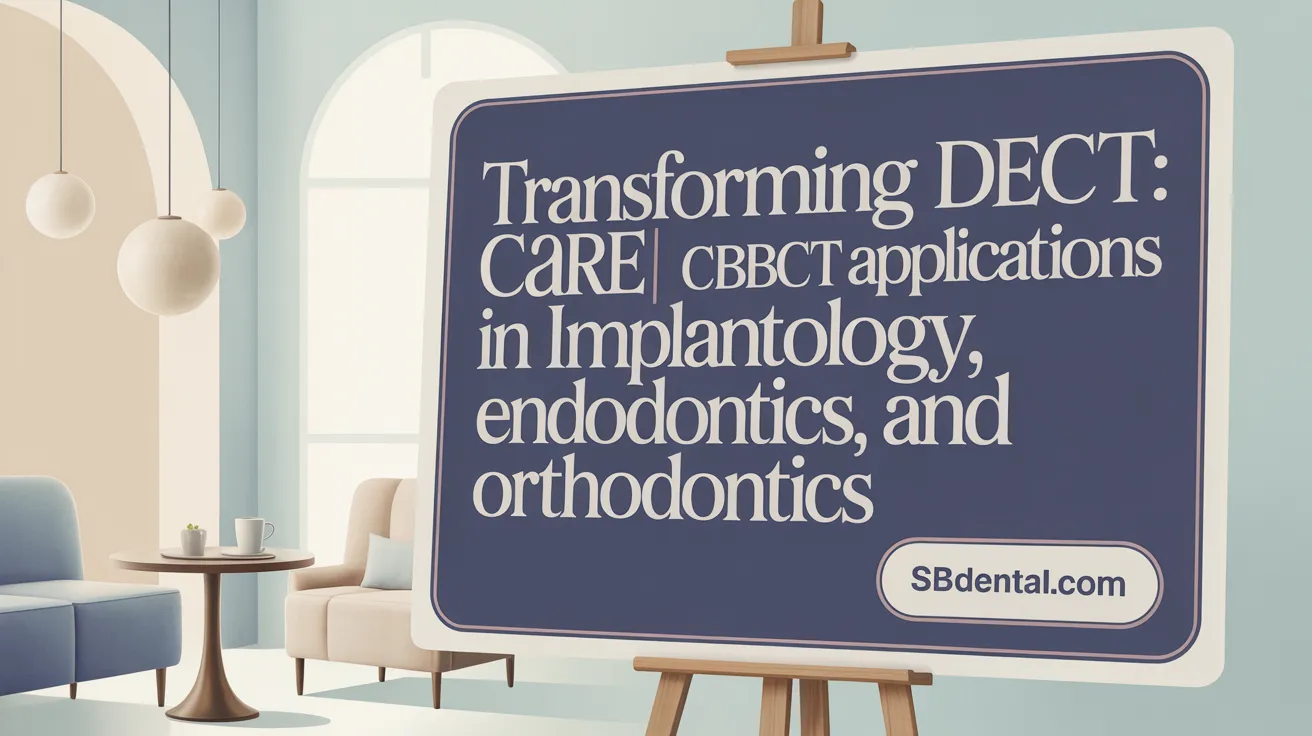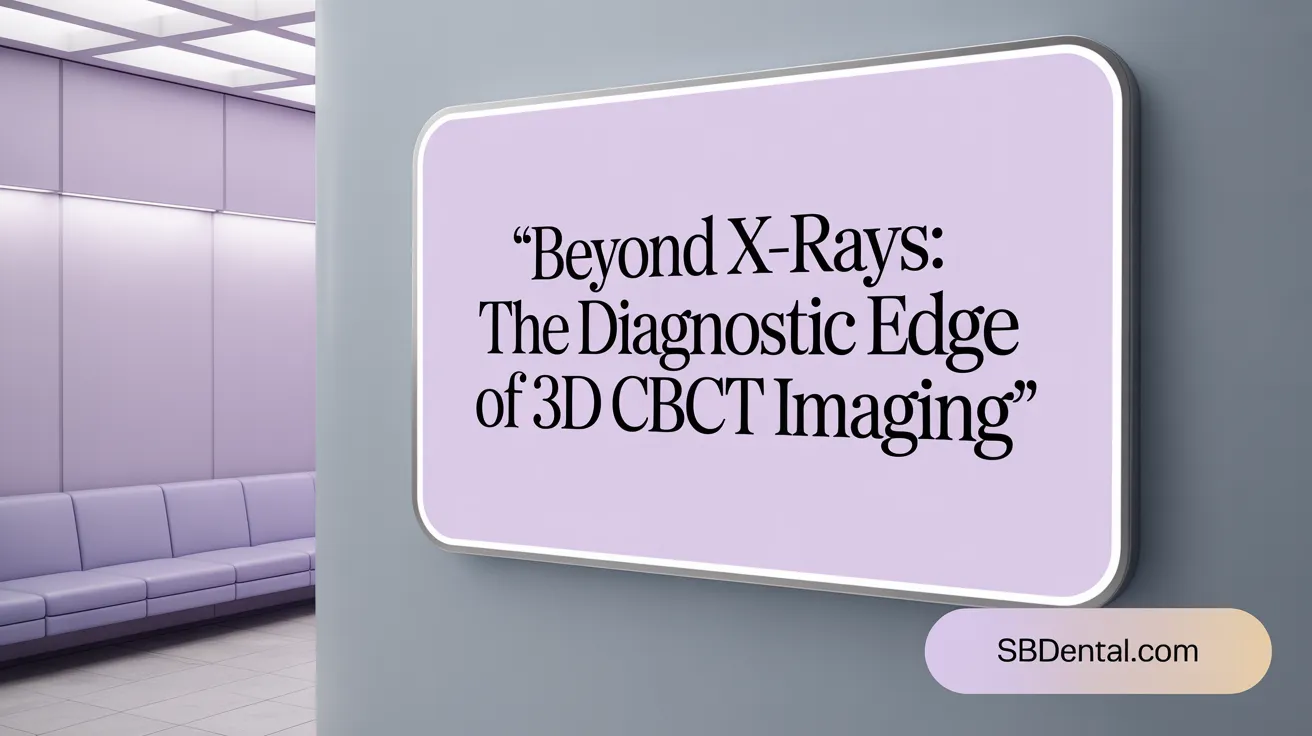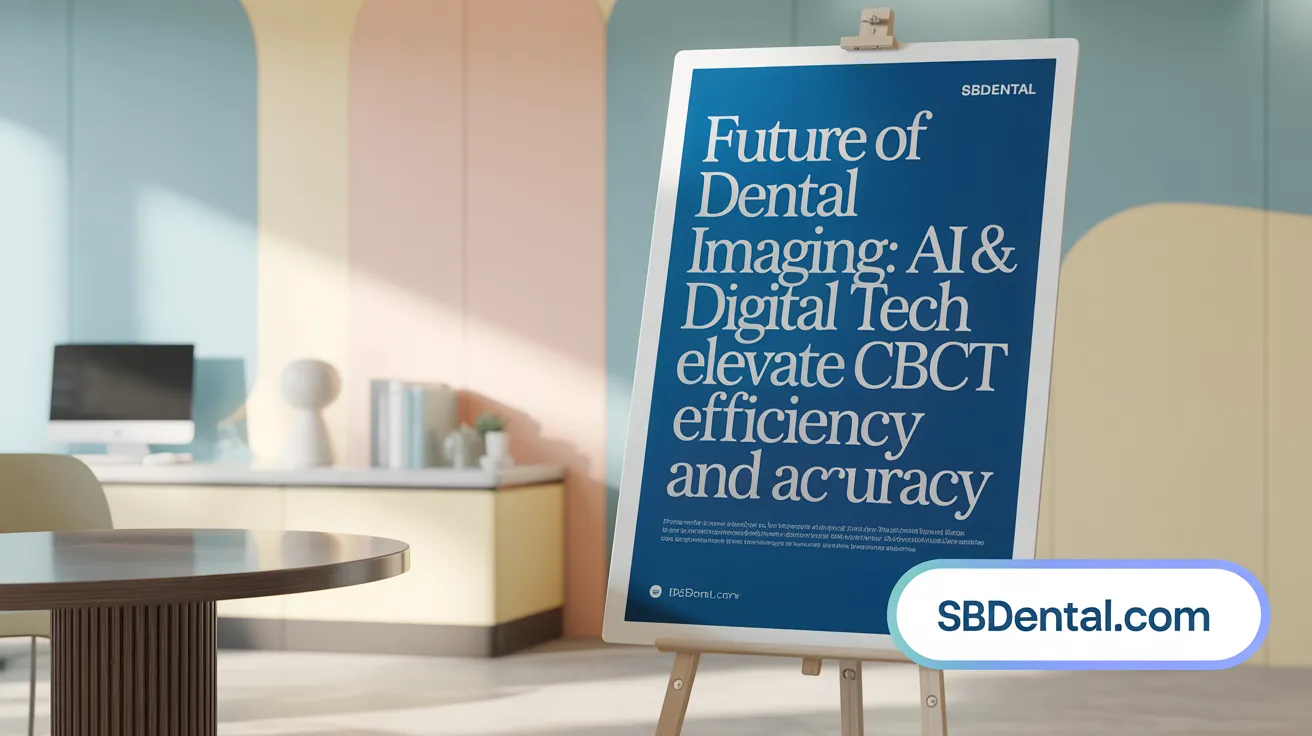Introduction to 3D CBCT Imaging in Dentistry
Cone Beam Computed Tomography (CBCT) represents a significant advancement in dental imaging technology, providing three-dimensional, high-resolution views of oral and maxillofacial structures. By delivering precise volumetric data with lower radiation doses than traditional CT scans, CBCT is transforming modern dentistry through enhanced diagnostic accuracy, treatment planning, and patient outcomes. This article explores the technology, benefits, and applications of 3D CBCT imaging, highlighting its role in improving dental care across multiple specialties.
Understanding CBCT Technology and Its Advantages

What is Cone Beam Computed Tomography (CBCT)?
CBCT is an advanced imaging technique that uses a cone-shaped X-ray beam rotating 180 to 360 degrees around the patient's head. This rotation captures multiple two-dimensional images, which are then reconstructed into detailed, three-dimensional volumetric data. This 3D data provides accurate images of oral and maxillofacial structures such as teeth, bone, nerves, and soft tissues.
How does CBCT differ from traditional CT and 2D dental X-rays?
Unlike traditional CT scans that use a fan-shaped X-ray beam and expose patients to higher radiation doses, CBCT employs a cone-shaped beam that significantly lowers radiation exposure—typically reducing it to 3%-20% of medical CT levels. Additionally, CBCT delivers high-resolution 3D images, giving dentists a comprehensive view of dental anatomy that conventional 2D X-rays cannot provide, which are limited to flat, two-dimensional images.
What are the safety considerations associated with CBCT scans?
Although CBCT exposes patients to more radiation than standard dental X-rays, it remains much safer than conventional medical CT scans due to its reduced dose. Safety guidelines recommend using the ALARA (As Low As Reasonably Achievable) principle to limit radiation exposure. This includes adjusting scanning parameters like field of view (FOV), voxel size, and exposure time to the minimum needed for diagnosis. Protective gear such as thyroid collars and lead aprons should be applied when possible. Special caution is advised for sensitive groups like children and pregnant patients, where scans should only be performed if clinically justified.
How is a CBCT scan performed?
During the scan, the patient either sits or lies down while the CBCT machine’s X-ray source and flat panel detector rotate around their head. This process lasts from 5 to 40 seconds and captures several hundred images. Specialized software then reconstructs these images into a 3D model. Dentists can then view the anatomy in various planes and renderings, helping with precise diagnosis and treatment planning with CBCT 3D image reconstruction.
Clinical Applications of 3D CBCT Imaging in Dentistry

How does CBCT improve diagnosis and treatment in endodontics?
CBCT imaging offers detailed 3D visualization of root canal systems, revealing complex morphologies, accessory canals, fractures, and anatomical variations that traditional 2D X-rays often miss. This enhanced accuracy aids in diagnosing periapical lesions, root resorptions, and fractures. By allowing precise treatment planning and navigation, CBCT reduces procedural errors, consequently improving the success rates of root canal therapies. For more, see 3D CBCT imaging in root canal therapy and Cone Beam Computed Tomography in endodontics.
What role does CBCT play in dental implant procedures?
CBCT provides comprehensive assessment of alveolar bone quantity, quality, density, and spatial relations to vital structures such as nerves and sinuses. This precision enables virtual implant placement and surgical guide fabrication. Using CBCT in implant planning minimizes surgical risks, improves stability, and contributes to better long-term outcomes. Relevant details can be found in Dental Cone Beam CT and Dental Cone Beam Computed Tomography.
How is CBCT utilized in orthodontic and temporomandibular joint (TMJ) assessments?
CBCT facilitates evaluation of impacted teeth, detailed craniofacial skeletal structures, airway spaces, and TMJ morphology. This three-dimensional insight supports orthodontic treatment planning, orthognathic surgery preparation, and TMJ disorder diagnosis by delivering views that surpass standard radiographs in both scope and accuracy. Learn more at CBCT imaging in dentistry and CBCT for orthodontic assessment.
What are the benefits of CBCT in periodontics and oral pathology?
In periodontics, CBCT accurately detects intra-bony and furcation defects, dehiscences, and fenestrations, improving upon the limitations of 2D imaging. It also assists in monitoring regenerative therapy effectiveness. For oral pathology, CBCT efficiently identifies cysts, tumors, developmental anomalies, and fractures, providing a robust tool for thorough diagnosis and informed treatment planning. For further information, see CBCT in periodontal disease assessment and CBCT applications in oral surgery and pathology.
Advantages of 3D Imaging over Traditional Methods

What diagnostic advantages does 3D CBCT imaging provide over traditional 2D X-rays?
3D CBCT imaging offers high-resolution, volumetric images that capture dental and maxillofacial structures from multiple angles. Unlike traditional 2D X-rays, CBCT provides a comprehensive view revealing hidden infections, accessory canals, complex root canal anatomy, root fractures, impacted teeth, and bone abnormalities with significantly improved accuracy. This enhanced visualization leads to better diagnostic precision and treatment planning. For more information, see 3D CBCT imaging in root canal therapy, Dental cone beam CT overview, and Advantages of CBCT in dentistry.
How does radiation exposure from CBCT compare to other imaging modalities?
Radiation exposure from CBCT is considerably lower than conventional medical CT scans, often up to 98.5% less. While the exposure is slightly higher than that of traditional dental X-rays, advances in technology such as adjustable field of view (FOV) and voxel size help minimize radiation dose without sacrificing image quality. Consequently, CBCT balances safety and diagnostic detail effectively. For details, refer to CBCT radiation dose reduction, CBCT vs medical CT radiation, and CBCT radiation safety overview.
How does 3D imaging impact patient understanding and treatment success?
The detailed and interactive 3D images from CBCT enable dentists to clearly demonstrate dental conditions and treatment plans to patients. This visual clarity enhances patient education and engagement, increasing confidence and facilitating informed decision-making. Improved understanding often leads to higher compliance, acceptance of treatment options, and overall better clinical outcomes. Learn more at CBCT imaging technology, 3D CBCT imaging benefits, and CBCT and AI integration.
What are the logistical benefits of CBCT imaging in dental practice?
CBCT scans are swift, typically completed within 20 to 40 seconds, non-invasive, and painless for patients. The compact and cost-effective CBCT machines can be installed directly in dental offices, allowing immediate image acquisition and review by clinicians. This integration speeds up diagnosis and treatment planning, improving workflow efficiency and patient satisfaction. See additional insights at CBCT in dental practice, 3D dental imaging advantages, and Dental Cone Beam CT advantages.
Integration of AI and Modern Digital Technologies with CBCT

How is artificial intelligence (AI) integrated with CBCT technology?
AI platforms like Overjet augment CBCT image analysis by automatically detecting anomalies and highlighting key anatomical landmarks. This technology applies visual overlays and standardizes diagnostic results, supporting identification of dental caries, bone level changes, and endodontic or periodontal diseases. AI helps reduce diagnostic variability among clinicians by providing consistent and precise interpretations of complex 3D images.
What operational benefits does AI provide in dental imaging?
Integrating AI improves the speed and confidence of diagnoses, enabling earlier detection of dental pathologies. It also enhances the quality of clinical documentation and streamlines clinical workflows. Dental practices using AI-assisted CBCT report an increase of 10–20% in accepted treatment plans, more consistent diagnostic outcomes, and improved insurance documentation, ultimately leading to better patient outcomes and greater operational efficiency.
How do digital imaging systems complement CBCT scans?
Digital dental technologies, including intraoral scanners, 3D printing, and CAD/CAM systems, complement CBCT by enabling precise digital impressions and fabrication of surgical guides and custom restorations. Cloud-based platforms allow secure storage and easy sharing of imaging data, which enhances collaboration among dental professionals and supports tele-dentistry, increasing access to expert consultations. For more details on these advancements, see Digital Imaging in Dentistry and AI in dental imaging systems.
What are recent trends in patient-centered CBCT imaging?
Modern CBCT practice emphasizes low radiation doses, rapid scanning times, and noninvasive procedures to prioritize patient comfort and safety. User-friendly visualization software enhances patient education by allowing detailed exploration of 3D images, which fosters greater understanding and engagement in treatment decisions. Emerging innovations such as AI and augmented reality are expected to further elevate diagnostic accuracy and treatment guidance, shaping the future of personalized dental care. Learn more about these trends at CBCT and AI in Dentistry and The Evolution of Imaging in Modern Dentistry.
Challenges, Limitations, and Best Practices for CBCT Use
What challenges exist in interpreting CBCT images?
Interpreting CBCT scans is complex due to the large volume of detailed 3D data generated. Accurate reading demands specialized training and expertise to identify subtle pathologies and anatomical details. Without systematic review, there is a risk of diagnostic variability among providers and potential missed findings. Manual documentation errors can occur if standards are not strictly followed (source).
What are the radiation concerns associated with CBCT?
While CBCT exposes patients to considerably less radiation than conventional medical CT scans, its doses are still higher than those of traditional dental X-rays. Radiation levels vary based on field of view (FOV), voxel size, and device settings. Therefore, minimizing exposure is crucial through adherence to the ALARA (As Low As Reasonably Achievable) principle and selecting the smallest FOV necessary for the diagnostic task (source).
What image limitations and artifacts affect CBCT scans?
CBCT imaging can be affected by image noise and artifacts such as beam hardening, particularly when metallic restorations or dense structures are present. These issues reduce soft tissue contrast and may compromise diagnostic clarity. In some cases, additional or repeat imaging might be required to obtain sufficient information (source).
What best practice guidelines govern the use of CBCT in dentistry?
Professional recommendations emphasize using CBCT only when it significantly benefits diagnosis or treatment planning over standard imaging. It should be considered complementary, not a substitute. Operators must be qualified and trained to optimize scanning protocols and interpret the entire field of view comprehensively. Protective measures like shielding and quality controls are mandatory to ensure safety, with thorough documentation and risk-benefit evaluation as part of clinical protocols (source).
The Future of 3D CBCT Imaging in Dentistry
3D CBCT imaging continues to revolutionize dental diagnostics and treatment planning by providing unparalleled three-dimensional visualization of oral and maxillofacial structures with lower radiation exposure. Its broad applications across dental specialties enhance diagnostic accuracy, clinical outcomes, and patient education. Integration with artificial intelligence and digital workflows is further refining its utility, improving efficiency and case acceptance. While challenges like radiation dose and interpretive complexity remain, adherence to best practices and technological advancements promise safer, more precise, and patient-centered dental care. As CBCT technology evolves, it is poised to become an indispensable tool that elevates modern dentistry to new standards of precision, safety, and personalized treatment.
